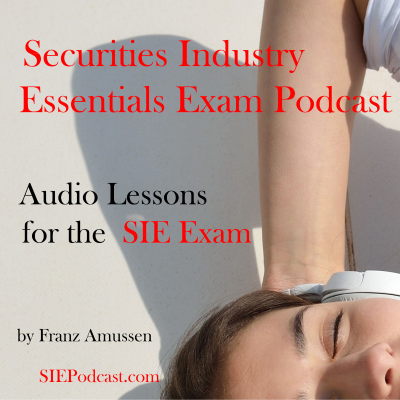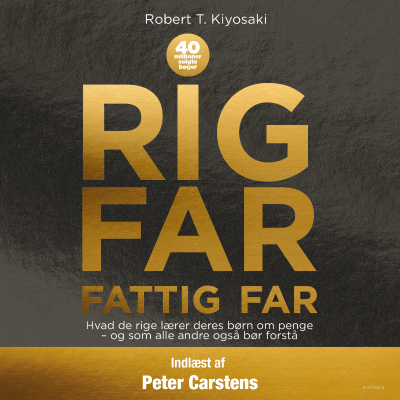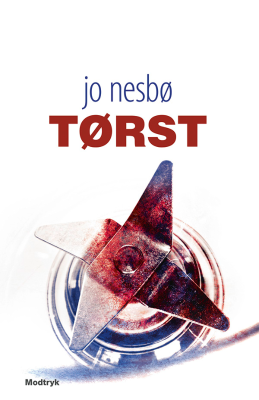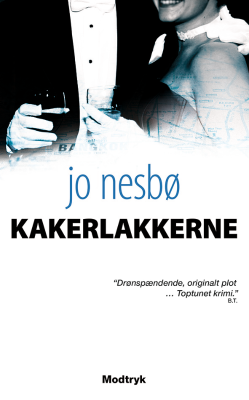
SIE Exam: Securities Industry Essentials Exam Lessons and Information
Podcast af Franz
Prøv gratis i 7 dage
99 kr. / måned efter prøveperiode.Ingen binding.

Mere end 1 million lyttere
Du vil elske Podimo, og du er ikke alene
Rated 4.7 in the App Store
Læs mere SIE Exam: Securities Industry Essentials Exam Lessons and Information
SIE Exam: Securities Industry Essentials Exam Podcast Lessons and Information for the FINRA SIE Exam
Alle episoder
159 episoderson23 Securities Act of 1933 Quiz THIS IS A SIE PODCAST INTERVIEW LOGAN KELLER This is and interview with a new entrant to the financial services industry, Logan Keller.Logan talks about his background and his interesting path to become a RIA agent. SIE Exam Lessons [https://siepodcast.com/wp-content/uploads/2020/05/SIE-Book-Cover-2020-2nd-Edition-Final-600x960-1.jpg]https://series7podcast.gumroad.com/l/xYHvf[https://www.series7podcast.com/wp-content/uploads/2013/01/Red-Buy-Now-Button-99-99-150px.jpg]https://series7podcast.gumroad.com/l/xYHvfTotal Course 37 hours 10 Min 37 hours 10 Min of audio instruction to help you prepare for the Securities Industry Essentials Exam 59 Audio Lessons for Securities Industry Essentials Exam 13 Bonus Lessons about the finance industry Securities Industry Essentials Exam Podcast Audio Lessons for the SIE Exam THE FULL COURSE DETAILS: 37 HOURS 10 MIN OF AUDIO INSTRUCTION TO HELP YOU PREPARE FOR THE SECURITIES INDUSTRY ESSENTIALS EXAM 59 Audio Lessons for Securities Industry Essentials Exam 13 Bonus Lessons about the finance industry Securities Industry Essentials Exam Podcast Audio Lessons for the SIE Exam NEW SERIES 7 EXAM AND SIE EXAM DETAILS [https://siepodcast.com/]. All candidates now must now pass both the SIE exam (securities industry essentials exam) as well as the New Top-Off Series 7 Exam. A Series 7 candidate must also have an industry sponsor in order to take the examination to take the SIE Exam the candidate simply needs to be 18 years old and no broker affiliation is needed.. https://www.finra.org/industry/essentials-exam [https://www.finra.org/industry/essentials-exam] * “Securities Industry Essentials (SIE) Exam Available Beginning October 1, 2018 The Securities Industry Essentials (SIE or Essentials) Exam, available beginning October 1, 2018, is a new FINRA exam for prospective securities industry professionals. This introductory-level exam assesses a candidate’s knowledge of basic securities industry information including concepts fundamental to working in the industry, such as types of products and their risks; the structure of the securities industry markets, regulatory agencies and their functions; and prohibited practices. Key Features of the Essentials Exam ________________________________________ • The Essentials exam is open to anyone aged 18 or older, including students and prospective candidates interested in demonstrating basic industry knowledge to potential employers. • Association with a firm is not required, and individuals are permitted to take the exam before or after associating with a firm. • Essentials exam results are valid for four years. The Essentials Exam at a Glance ________________________________________ Number of Items 75 Format Multiple Choice Duration 105 minutes Passing Score 70% Cost $60” NEW SERIES 7 EXAM The New Series 7 Content Outline provides a comprehensive guide to the range of topics covered on the exam, as well as the depth of knowledge required. The outline is comprised of the four main job functions of a general securities representative. The table below lists the allocation of exam questions for each main job function. Major Job Functions Percentage of Test Questions Number of Test Questions (F1) Seeks Business for the Broker-Dealer from Customers and Potential Customers 7% 9 (F2) Opens Accounts after Obtaining and Evaluating Customers’ Financial Profile and Investment Objectives 9% 11 (F3) Provides Customers with Information about Investments, Makes Suitable Recommendations, Transfers Assets and Maintains Appropriate Records 73% 91 (F4) Obtains and Verifies Customers’ Purchase and Sales Instructions and Agreements; Processes, Completes, and Confirms Transactions 11% 14 TOTAL 100% 125” The five job functions of the new Series 7 General Securities Representative Exam will be: “Seeks business for the broker-dealer through customers and potential customers” “Evaluates customers’ financial status, financial needs and risk tolerance, and helps them identify their investment objectives” “Opens accounts, transfers assets and maintains appropriate account records” “Provides customers with information on investments and makes suitable recommendations” “Obtains and verifies customer’s purchase and sales instructions, enters orders and follows up” These five functions of the new series 7 exam are the same or substantially similar to ones on the current Series 7 exam. A notable change from the existing Series 7 exam is the addition of evaluating customer “risk tolerance.” https://www.finra.org/industry/series7 [https://www.finra.org/industry/series7] [https://siepodcast.com/wp-content/uploads/2024/01/2023-Series-7-Lesson-Top-Off-Lessons-7th-ed-Album-Art-TM-600.webp]https://series7podcast.gumroad.com/l/xFdXl HERE IS WHAT MY CUSTOMERS SAY ABOUT MY AUDIO LESSONS TESTIMONIALS [https://www.series7podcast.com/series-7-course-review/] ————————— New Series 7 Exam and SIE Exam details. FINRA has announced major changes to the Series 7 Exam effective October 1, 2018. With the introduction of the Securities Industries Essentials Exam (SIE Exam) the new series 7 has been pared down to 125 questions from its original 250 questions. https://www.finra.org/industry/series7 [https://www.finra.org/industry/series7] However there is now a prerequisite before taking the new Series 7 Exam all candidates now must have passed the SIE exam (securities industry essentials exam). In addition thing a series 7 candidate must also have an industry sponsor in order to take the examination. https://www.finra.org/industry/essentials-exam “Securities Industry Essentials (SIE) Exam Available Beginning October 1, 2018 The Securities Industry Essentials (SIE or Essentials) Exam, available beginning October 1, 2018, is a new FINRA exam for prospective securities industry professionals. This introductory-level exam assesses a candidate’s knowledge of basic securities industry information including concepts fundamental to working in the industry, such as types of products and their risks; the structure of the securities industry markets, regulatory agencies and their functions; and prohibited practices. Key Features of the Essentials Exam ________________________________________ • The Essentials exam is open to anyone aged 18 or older, including students and prospective candidates interested in demonstrating basic industry knowledge to potential employers. • Association with a firm is not required, and individuals are permitted to take the exam before or after associating with a firm. • Essentials exam results are valid for four years. The Essentials Exam at a Glance ________________________________________ Number of Items 75 Format Multiple Choice Duration 105 minutes Passing Score 70% Cost $60” OUTLINE OF SIE EXAM: HTTPS://WWW.FINRA.ORG/SITES/DEFAULT/FILES/SIE%20OUTLINE-01.12.18.PDF [https://www.finra.org/sites/default/files/SIE%20Outline-01.12.18.pdf] New-Financial-Services-Industry steps [https://siepodcast.com/wp-content/uploads/2018/12/New-Financial-Services-Industry-795-n.jpg] https://www.finra.org/industry/series7 [https://www.finra.org/industry/series7] https://www.finra.org/sites/default/files/Series_7_Content_Outline.pdf [https://www.finra.org/sites/default/files/Series_7_Content_Outline.pdf] HERE IS WHAT MY CUSTOMERS SAY ABOUT MY AUDIO LESSONS TESTIMONIALS [https://www.series7podcast.com/series-7-course-review/] Loading… [https://gumroad.com/l/usMV]
SIE Exam Lesson 25 Sarbanes-Oxley Act Quiz SIE EXAM LESSON 25 SARBANES-OXLEY ACT QUIZ This is a SIE Exam Lesson 25 Sarbanes-Oxley Act Quiz which is the Sarbanes Oxley Act, See how you do if you need help listen to the lesson over. Questions covered include 1. The Uniform Securities Agent State Law Examination is also known as the ___. A. Series 63 Exam B. Series 64 Exam C. Series 65 Exam D. Series 66 Exam 2. Blue sky laws are federal regulations. A. True B. False 3. An offering that is exempted from federal regulation is always exempted from state regulation. A. True B. False 4. A person has registered his securities in the Securities and Exchange Commission but he wants those securities be recognized in a certain state. What kind of registration does he need to file? A. registration by coordination B. registration by filing C. registration by notification D. registration by qualification 5. Taking orders from customers in a certain state requires broker-dealers to be registered in that state. A. True B. False 6. This rule separated the conflicts of interest that were inherent between the underwriter and the research analyst. A. Prudent Man Rule B. Sarbanes-Oxley Act C. Securities Investor Protection Act D. Trust Indenture Act 7. Which of the following would a prudent man likely to do? A. buy government securities for his client B. buy naked options for his client C. buy penny stocks for his client D. short stocks in the client’s account 8. Which of the following will most likely be found in the legal list of securities that fall within the prudent man rule? (Select all that apply.) A. government securities B. highly rated corporate bonds C. highly rated municipal bonds D. 144 stocks 9. The Trust Indenture Act of 1939 requires a trust indenture for a corporate bond offering of at least ___. A. $3 million B. $4 million C. $5 million D. $6 million 10. Which of the following is true about the Investment Advisor Act of 1940? (Select all that apply.) A. It covers firms that offer wrap accounts and charge fees. B. It covers the people who charge a fee for investment advice. C. It only applies if the investment advisor gives advice to 15 or more people. D. It requires that investment advisors pass the Series 7 Examination. 11. The Securities Investor Protection Corporation protects the customer’s assets up to ___. A. $500,000 B. $600,000 C. $800,000 D. $1,000,000 12. A client has an IRA account and a regular account. Under the Securities Investor Protection Act of 1970, the client has only one account. A. True B. False 13. The Federal Telephone Consumer Protection Act prohibits unsolicited calls before 8:00 A.M. or after 9:00 P.M. of the local time of the caller. A. True B. False 14. Which of the following is true about the Do Not Call list? (Select all that apply.) A. A firm can only call the persons listed on the Do Not Call list during weekdays on office hours but not on weekends and non-office hours. B. A person listed on the Do Not Call list can bring civil law enforcement actions against the firm that calls him. C. It applies to unsolicited faxes. D. The caller must identify himself by name, firm, and where he’s coming from when calling a person on the Do Not Call list so that his call may be entertained. 15. Which of the following does the Sarbanes-Oxley Act require? A. It requires accounting firm to combine their management consultation business with their auditing business. B. It requires accounting firm to have both management consultation business and auditing business. C. It requires accounting firm to have either management consultation business or auditing business but not both. D. It requires accounting firms to separate their management consultation business from their auditing business. 16. According to the Sarbanes-Oxley Act, an accounting firm acting as auditors for the firm has to report to the ___. A. independent directors of the corporation B. board of directors audit committee C. Security and Exchange Commission D. stockholders 17. According to the Sarbanes-Oxley Act, the CEO and CFO of the issuing company should not be employed by the company’s audit firm for ___. A. one year after the audit B. one year preceding the audit C. six months after the audit D. six months preceding the audit 18. According to the Sarbanes-Oxley Act, they must certify annually the financial statements in the 10-Q and 10-K reports. (Select all that apply.) A. CEO B. CFO C. directors D. stockholders 19. According to the Sarbanes-Oxley Act, insider trade reports have to be made public through the 8-K reports, which must be filed within ___ business days. A. 4 B. 5 C. 10 D. 15 20. The Sarbanes-Oxley Act gives insiders who trade a stock outside the blackout period ___ business days to report their trade. A. one B. two C. three D. five We hope you did well on this SIE Exam Lesson Sarbanes Oxley Act Quiz THE SARBANES-OXLEY ACT (SOX) The Sarbanes-Oxley Act (SOX) is a comprehensive legislation enacted in the United States in 2002 to enhance corporate governance and improve the accuracy and reliability of financial reporting. While the primary focus of SOX is on public companies, its impact extends to various professionals in the financial industry, including financial consultants. Here’s how SOX affects financial consultants and why it can be beneficial for their clients: 1. Increased Demand for Financial Consultants: SOX introduced stricter regulations and compliance requirements for public companies. As a result, organizations often seek the expertise of financial consultants to help them navigate the complexities of SOX compliance. This has created an increased demand for financial consultants, providing more opportunities for professionals in this field. 2. Expertise in Internal Controls and Risk Management: SOX places a strong emphasis on internal controls and risk management. Financial consultants play a crucial role in assisting companies with the development, implementation, and evaluation of internal controls to ensure compliance with SOX requirements. They help identify potential risks and weaknesses in financial reporting processes and provide guidance on improving controls and mitigating risks. 3. Audit and Assurance Services: SOX requires companies to undergo regular independent audits of their internal controls and financial statements. Financial consultants often collaborate with external auditors to perform these audits and provide assurance services. They assist in evaluating the effectiveness of internal controls and ensure that financial statements are accurate and reliable, which enhances investor confidence in the company’s financial reporting. 4. Ethical Standards and Corporate Governance: SOX established ethical standards for corporate governance and accountability. Financial consultants play a crucial role in promoting and enforcing these standards within organizations. They assist in developing and implementing codes of conduct, ensuring compliance with ethical guidelines, and monitoring adherence to corporate governance principles. This helps in fostering a culture of transparency, integrity, and accountability within client organizations. 5. Enhanced Investor Protection: SOX aims to protect investors by improving the accuracy and reliability of financial information. Financial consultants contribute to this goal by assisting companies in producing transparent and accurate financial reports. By ensuring compliance with SOX regulations, financial consultants help build trust between companies and their investors, which can positively impact the overall financial market. 6. Risk Mitigation and Fraud Prevention: SOX requires companies to implement measures to detect and prevent fraudulent activities. Financial consultants assist in identifying potential fraud risks, implementing anti-fraud controls, and conducting investigations when fraudulent activities are suspected. Their expertise in financial analysis and risk assessment helps clients establish robust systems to mitigate the risk of fraud, protecting the interests of stakeholders. In summary, the Sarbanes-Oxley Act has had a significant impact on financial consultants. It has increased demand for their services, expanded their role in internal controls and risk management, and emphasized the importance of ethical standards and corporate governance. By ensuring compliance with SOX regulations, financial consultants contribute to enhancing transparency, mitigating risks, and protecting the interests of investors, ultimately benefiting both their clients and the financial industry as a whole. SIE Exam Lessons [https://siepodcast.com/wp-content/uploads/2020/05/SIE-Book-Cover-2020-2nd-Edition-Final-600x960-1.jpg]https://gum.co/xYHvf[https://www.series7podcast.com/wp-content/uploads/2013/01/Red-Buy-Now-Button-99-99-150px.jpg]https://gum.co/xYHvfTotal Course 37 hours 10 Min 37 hours 10 Min of audio instruction to help you prepare for the Securities Industry Essentials Exam 59 Audio Lessons for Securities Industry Essentials Exam 13 Bonus Lessons about the finance industry Securities Industry Essentials Exam Podcast Audio Lessons for the SIE Exam THE FULL COURSE DETAILS: 37 HOURS 10 MIN OF AUDIO INSTRUCTION TO HELP YOU PREPARE FOR THE SECURITIES INDUSTRY ESSENTIALS EXAM 59 Audio Lessons for Securities Industry Essentials Exam 13 Bonus Lessons about the finance industry Securities Industry Essentials Exam Podcast Audio Lessons for the SIE Exam NEW SERIES 7 EXAM AND SIE EXAM DETAILS [https://siepodcast.com/]. All candidates now must now pass both the SIE exam (securities industry essentials exam) as well as the New Top-Off Series 7 Exam. A Series 7 candidate must also have an industry sponsor in order to take the examination to take the SIE Exam the candidate simply needs to be 18 years old and no broker affiliation is needed.. https://www.finra.org/industry/essentials-exam [https://www.finra.org/industry/essentials-exam] * “Securities Industry Essentials (SIE) Exam Available Beginning October 1, 2018 The Securities Industry Essentials (SIE or Essentials) Exam, available beginning October 1, 2018, is a new FINRA exam for prospective securities industry professionals. This introductory-level exam assesses a candidate’s knowledge of basic securities industry information including concepts fundamental to working in the industry, such as types of products and their risks; the structure of the securities industry markets, regulatory agencies and their functions; and prohibited practices. Key Features of the Essentials Exam ________________________________________ • The Essentials exam is open to anyone aged 18 or older, including students and prospective candidates interested in demonstrating basic industry knowledge to potential employers. • Association with a firm is not required, and individuals are permitted to take the exam before or after associating with a firm. • Essentials exam results are valid for four years. The Essentials Exam at a Glance ________________________________________ Number of Items 75 Format Multiple Choice Duration 105 minutes Passing Score 70% Cost $60” NEW SERIES 7 EXAM The New Series 7 Content Outline provides a comprehensive guide to the range of topics covered on the exam, as well as the depth of knowledge required. The outline is comprised of the four main job functions of a general securities representative. The table below lists the allocation of exam questions for each main job function. Major Job Functions Percentage of Test Questions Number of Test Questions (F1) Seeks Business for the Broker-Dealer from Customers and Potential Customers 7% 9 (F2) Opens Accounts after Obtaining and Evaluating Customers’ Financial Profile and Investment Objectives 9% 11 (F3) Provides Customers with Information about Investments, Makes Suitable Recommendations, Transfers Assets and Maintains Appropriate Records 73% 91 (F4) Obtains and Verifies Customers’ Purchase and Sales Instructions and Agreements; Processes, Completes, and Confirms Transactions 11% 14 TOTAL 100% 125” The five job functions of the new Series 7 General Securities Representative Exam will be: “Seeks business for the broker-dealer through customers and potential customers” “Evaluates customers’ financial status, financial needs and risk tolerance, and helps them identify their investment objectives” “Opens accounts, transfers assets and maintains appropriate account records” “Provides customers with information on investments and makes suitable recommendations” “Obtains and verifies customer’s purchase and sales instructions, enters orders and follows up” These five functions of the new series 7 exam are the same or substantially similar to ones on the current Series 7 exam. A notable change from the existing Series 7 exam is the addition of evaluating customer “risk tolerance.” https://www.finra.org/industry/series7 [https://www.finra.org/industry/series7] Series 7 Exam Audio Lesson Cover [https://siepodcast.com/wp-content/uploads/2021/04/2021-Series-7-Lesson-Top-Off-Lessons-4th-ed-Album-Art-TM-600.webp]https://gumroad.com/l/xFdXl Here is a link to the table of Contents [https://www.series7podcast.com/securities-industry-essentials-lessonstable-of-contents/] HERE IS WHAT MY CUSTOMERS SAY ABOUT MY AUDIO LESSONS TESTIMONIALS [https://www.series7podcast.com/series-7-course-review/] ————————— New Series 7 Exam and SIE Exam details. FINRA has announced major changes to the Series 7 Exam effective October 1, 2018. With the introduction of the Securities Industries Essentials Exam (SIE Exam) the new series 7 has been pared down to 125 questions from its original 250 questions. https://www.finra.org/industry/series7 [https://www.finra.org/industry/series7] However there is now a prerequisite before taking the new Series 7 Exam all candidates now must have passed the SIE exam (securities industry essentials exam). In addition thing a series 7 candidate must also have an industry sponsor in order to take the examination. https://www.finra.org/industry/essentials-exam “Securities Industry Essentials (SIE) Exam Available Beginning October 1, 2018 The Securities Industry Essentials (SIE or Essentials) Exam, available beginning October 1, 2018, is a new FINRA exam for prospective securities industry professionals. This introductory-level exam assesses a candidate’s knowledge of basic securities industry information including concepts fundamental to working in the industry, such as types of products and their risks; the structure of the securities industry markets, regulatory agencies and their functions; and prohibited practices. Key Features of the Essentials Exam ________________________________________ • The Essentials exam is open to anyone aged 18 or older, including students and prospective candidates interested in demonstrating basic industry knowledge to potential employers. • Association with a firm is not required, and individuals are permitted to take the exam before or after associating with a firm. • Essentials exam results are valid for four years. The Essentials Exam at a Glance ________________________________________ Number of Items 75 Format Multiple Choice Duration 105 minutes Passing Score 70% Cost $60” OUTLINE OF SIE EXAM: HTTPS://WWW.FINRA.ORG/SITES/DEFAULT/FILES/SIE%20OUTLINE-01.12.18.PDF [https://www.finra.org/sites/default/files/SIE%20Outline-01.12.18.pdf] New-Financial-Services-Industry steps [https://siepodcast.com/wp-content/uploads/2018/12/New-Financial-Services-Industry-795-n.jpg] https://www.finra.org/industry/series7 [https://www.finra.org/industry/series7] https://www.finra.org/sites/default/files/Series_7_Content_Outline.pdf [https://www.finra.org/sites/default/files/Series_7_Content_Outline.pdf] HERE IS WHAT MY CUSTOMERS SAY ABOUT MY AUDIO LESSONS TESTIMONIALS [https://www.series7podcast.com/series-7-course-review/] Loading… [https://gumroad.com/l/usMV]
SIE Exam Lesson 16 Options pt 6 SIE EXAM LESSON 16 OPTIONS PT 6 THIS IS A SIE EXAM LESSON 16 OPTIONS PT 6 OPTIONS PT.6 WHICH IS COVERING OPTION COMBINATIONS, SEE HOW YOU DO IF YOU NEED HELP LISTEN TO THE LESSON OVER. Questions covered include 1. It is the purchasing and selling of put or call options with different strike prices, different expiration dates, or both. A. combination B. spread C. straddle D. strangle 2. In a spread, when you close out one position, you are expected to close out the other position at the same time. A. True B. False 3. The longer the option, the higher the time value premium. A. True B. False 4. As an option approaches its expiration date, the time value on that option reaches its maximum value at the expiration of that option. A. True B. False 5. This spread is designed to try to capture the decline of an option’s time value as the option approaches its expiration date. A. calendar spread B. long call spread C. long put spread D. short call spread 6. Which of the following is bearish? A. long call spread B. short call spread C. short put spread D. all of the above 7. The maximum profit for a long call spread is the net cost of the spread. A. True B. False 8. A short call spread is a credit spread. A. True B. False 9. You bought Jan 80 call at $10 and sold Feb 80 call at $20. Stock trades at $100 at expiration. Feb 80 call has $5 time value left. Which is true? (Note: This transaction is a calendar spread. The expiration mentioned is the expiration of the call option on January.) A. You shall buy back the February 80 call at $5. B. You shall buy back the February 80 call at $20. C. You shall buy back the February 80 call at $25. D. The February 80 call would expire worthless. 10. You bought Nov 30 call at $3 and sold Dec 30 call at $5. Stock trades at $25 at Nov expiration. Dec 30 call has $1 time value left. Which is true? (Note: This transaction is a calendar spread.) A. The November 30 call would expire worthless. B. The December 30 call would expire worthless. C. You would have a net profit of $2 by closing your position on the spread. D. all of the above 11. You bought Mar 60 call at $5 and sold Apr 70 call at $3. This transaction is most probably a ___. A. long call spread B. long put spread C. short call spread D. short put spread 12. You initiated a long call spread by buying Sept 70 call at $10 and selling Oct 80 call at $5. What is your maximum profit in this transaction? A. $5 B. $10 C. $15 D. The maximum profit cannot be determined because the stock price is not given. 13. You initiated a long call spread by buying May 100 call at $15 and selling June 85 call at $8. What is your maximum loss in this transaction? A. $7 B. $8 C. $15 D. $23 14. If you enter into a long call spread, which of the following pair of transactions would give you the greatest possible profit? A. buying a July 30 call at $5 and selling an August 50 call at $4 B. buying a July 25 call at $6 and selling an August 40 call at $5 C. buying a July 40 call at $9 and selling an August 60 call at $5 D. All of the above transactions have equal maximum profit 15. You initiated a short call spread by buying a Jan 40 call at $4 and selling a Feb 30 call at $7. What is your maximum profit in this transaction? A. $3 B. $7 C. $11 D. The maximum profit cannot be determined because the stock price is not given. 16. If you enter into a short call spread, which of the following transactions would you pair with buying a Nov 65 call at $6 to have the greatest possible profit? A. selling a December 60 call at $7 per share B. selling a December 50 call at $8 per share C. selling a December 40 call at $9 per share D. The greatest possible profit would depend upon the highest price that the stock could get. 17. You entered into a long put spread by buying Aug 95 put at $15 and selling Sept 75 put at $9. Which of the following is true? A. A stock price of $100 at August expiration would give you the greatest profit. B. A stock price of $85 at August expiration would give you the greatest profit. C. A stock price of $80 at August expiration would give you the greatest profit. D. A stock price of $70 at August expiration would give you the greatest profit. 18. In a long put spread, you bought Apr 55 put at $6 and sold May 35 put at $3. If the stock trades at $60 at April expiration, which is true? A. The April 55 put would expire worthless. B. The May 35 put would have an intrinsic value of $25. C. You would lose $5 at April expiration. D. You would profit $3 at April expiration. 19. What’s your initial credit if you bought Oct 80 put at $9 and Nov 90 put at $13 both for a stock initially trading at $85? A. -$4 B. $4 C. $5 D. $8 20. In a short put spread, you bought June 60 put at $8 and sold July 75 put at $10. The stock trades at $70 at June expiration. Your net profit is: A. You would have a $2 net profit. B. You would have a $3 net profit. C. You would have a $5 net profit. D. You wouldn’t have a profit but instead a loss of $3. We hope you did well on this SIE Exam Lesson 16 Options pt 6 SIE Exam Lessons [https://siepodcast.com/wp-content/uploads/2020/05/SIE-Book-Cover-2020-2nd-Edition-Final-600x960-1.jpg]https://gum.co/xYHvf[https://www.series7podcast.com/wp-content/uploads/2013/01/Red-Buy-Now-Button-99-99-150px.jpg]https://gum.co/xYHvfTotal Course 37 hours 10 Min 37 hours 10 Min of audio instruction to help you prepare for the Securities Industry Essentials Exam 59 Audio Lessons for Securities Industry Essentials Exam 13 Bonus Lessons about the finance industry Securities Industry Essentials Exam Podcast Audio Lessons for the SIE Exam THE FULL COURSE DETAILS: 37 HOURS 10 MIN OF AUDIO INSTRUCTION TO HELP YOU PREPARE FOR THE SECURITIES INDUSTRY ESSENTIALS EXAM 59 Audio Lessons for Securities Industry Essentials Exam 13 Bonus Lessons about the finance industry Securities Industry Essentials Exam Podcast Audio Lessons for the SIE Exam NEW SERIES 7 EXAM AND SIE EXAM DETAILS [https://siepodcast.com/]. All candidates now must now pass both the SIE exam (securities industry essentials exam) as well as the New Top-Off Series 7 Exam. A Series 7 candidate must also have an industry sponsor in order to take the examination to take the SIE Exam the candidate simply needs to be 18 years old and no broker affiliation is needed.. https://www.finra.org/industry/essentials-exam [https://www.finra.org/industry/essentials-exam] * “Securities Industry Essentials (SIE) Exam Available Beginning October 1, 2018 The Securities Industry Essentials (SIE or Essentials) Exam, available beginning October 1, 2018, is a new FINRA exam for prospective securities industry professionals. This introductory-level exam assesses a candidate’s knowledge of basic securities industry information including concepts fundamental to working in the industry, such as types of products and their risks; the structure of the securities industry markets, regulatory agencies and their functions; and prohibited practices. Key Features of the Essentials Exam ________________________________________ • The Essentials exam is open to anyone aged 18 or older, including students and prospective candidates interested in demonstrating basic industry knowledge to potential employers. • Association with a firm is not required, and individuals are permitted to take the exam before or after associating with a firm. • Essentials exam results are valid for four years. The Essentials Exam at a Glance ________________________________________ Number of Items 75 Format Multiple Choice Duration 105 minutes Passing Score 70% Cost $60” NEW SERIES 7 EXAM The New Series 7 Content Outline provides a comprehensive guide to the range of topics covered on the exam, as well as the depth of knowledge required. The outline is comprised of the four main job functions of a general securities representative. The table below lists the allocation of exam questions for each main job function. Major Job Functions Percentage of Test Questions Number of Test Questions (F1) Seeks Business for the Broker-Dealer from Customers and Potential Customers 7% 9 (F2) Opens Accounts after Obtaining and Evaluating Customers’ Financial Profile and Investment Objectives 9% 11 (F3) Provides Customers with Information about Investments, Makes Suitable Recommendations, Transfers Assets and Maintains Appropriate Records 73% 91 (F4) Obtains and Verifies Customers’ Purchase and Sales Instructions and Agreements; Processes, Completes, and Confirms Transactions 11% 14 TOTAL 100% 125” The five job functions of the new Series 7 General Securities Representative Exam will be: “Seeks business for the broker-dealer through customers and potential customers” “Evaluates customers’ financial status, financial needs and risk tolerance, and helps them identify their investment objectives” “Opens accounts, transfers assets and maintains appropriate account records” “Provides customers with information on investments and makes suitable recommendations” “Obtains and verifies customer’s purchase and sales instructions, enters orders and follows up” These five functions of the new series 7 exam are the same or substantially similar to ones on the current Series 7 exam. A notable change from the existing Series 7 exam is the addition of evaluating customer “risk tolerance.” https://www.finra.org/industry/series7 [https://www.finra.org/industry/series7] Series 7 Exam Audio Lesson Cover [https://siepodcast.com/wp-content/uploads/2021/04/2021-Series-7-Lesson-Top-Off-Lessons-4th-ed-Album-Art-TM-600.webp]https://gumroad.com/l/xFdXl Here is a link to the table of Contents [https://www.series7podcast.com/securities-industry-essentials-lessonstable-of-contents/] HERE IS WHAT MY CUSTOMERS SAY ABOUT MY AUDIO LESSONS TESTIMONIALS [https://www.series7podcast.com/series-7-course-review/] ————————— New Series 7 Exam and SIE Exam details. FINRA has announced major changes to the Series 7 Exam effective October 1, 2018. With the introduction of the Securities Industries Essentials Exam (SIE Exam) the new series 7 has been pared down to 125 questions from its original 250 questions. https://www.finra.org/industry/series7 [https://www.finra.org/industry/series7] However there is now a prerequisite before taking the new Series 7 Exam all candidates now must have passed the SIE exam (securities industry essentials exam). In addition thing a series 7 candidate must also have an industry sponsor in order to take the examination. https://www.finra.org/industry/essentials-exam “Securities Industry Essentials (SIE) Exam Available Beginning October 1, 2018 The Securities Industry Essentials (SIE or Essentials) Exam, available beginning October 1, 2018, is a new FINRA exam for prospective securities industry professionals. This introductory-level exam assesses a candidate’s knowledge of basic securities industry information including concepts fundamental to working in the industry, such as types of products and their risks; the structure of the securities industry markets, regulatory agencies and their functions; and prohibited practices. Key Features of the Essentials Exam ________________________________________ • The Essentials exam is open to anyone aged 18 or older, including students and prospective candidates interested in demonstrating basic industry knowledge to potential employers. • Association with a firm is not required, and individuals are permitted to take the exam before or after associating with a firm. • Essentials exam results are valid for four years. The Essentials Exam at a Glance ________________________________________ Number of Items 75 Format Multiple Choice Duration 105 minutes Passing Score 70% Cost $60” OUTLINE OF SIE EXAM: HTTPS://WWW.FINRA.ORG/SITES/DEFAULT/FILES/SIE%20OUTLINE-01.12.18.PDF [https://www.finra.org/sites/default/files/SIE%20Outline-01.12.18.pdf] New-Financial-Services-Industry steps [https://siepodcast.com/wp-content/uploads/2018/12/New-Financial-Services-Industry-795-n.jpg] https://www.finra.org/industry/series7 [https://www.finra.org/industry/series7] https://www.finra.org/sites/default/files/Series_7_Content_Outline.pdf [https://www.finra.org/sites/default/files/Series_7_Content_Outline.pdf] HERE IS WHAT MY CUSTOMERS SAY ABOUT MY AUDIO LESSONS TESTIMONIALS [https://www.series7podcast.com/series-7-course-review/] Loading… [https://gumroad.com/l/usMV]
SIE Exam Lesson 15 Options pt 5 SIE EXAM LESSON 15 OPTIONS PT 5 THIS IS A SIE EXAM LESSON 15 OPTIONS PT 5 OPTIONS PT.1 WHICH IS COVERING SPREAD OPTIONS, SEE HOW YOU DO IF YOU NEED HELP LISTEN TO THE LESSON OVER. Questions covered include 1. It is the purchasing and selling of put or call options with different strike prices, different expiration dates, or both. A. combination B. spread C. straddle D. strangle 2. In a spread, when you close out one position, you are expected to close out the other position at the same time. A. True B. False 3. The longer the option, the higher the time value premium. A. True B. False 4. As an option approaches its expiration date, the time value on that option reaches its maximum value at the expiration of that option. A. True B. False 5. This spread is designed to try to capture the decline of an option’s time value as the option approaches its expiration date. A. calendar spread B. long call spread C. long put spread D. short call spread 6. Which of the following is bearish? A. long call spread B. short call spread C. short put spread D. all of the above 7. The maximum profit for a long call spread is the net cost of the spread. A. True B. False 8. A short call spread is a credit spread. A. True B. False 9. You bought Jan 80 call at $10 and sold Feb 80 call at $20. Stock trades at $100 at expiration. Feb 80 call has $5 time value left. Which is true? (Note: This transaction is a calendar spread. The expiration mentioned is the expiration of the call option on January.) A. You shall buy back the February 80 call at $5. B. You shall buy back the February 80 call at $20. C. You shall buy back the February 80 call at $25. D. The February 80 call would expire worthless. 10. You bought Nov 30 call at $3 and sold Dec 30 call at $5. Stock trades at $25 at Nov expiration. Dec 30 call has $1 time value left. Which is true? (Note: This transaction is a calendar spread.) A. The November 30 call would expire worthless. B. The December 30 call would expire worthless. C. You would have a net profit of $2 by closing your position on the spread. D. all of the above 11. You bought Mar 60 call at $5 and sold Apr 70 call at $3. This transaction is most probably a ___. A. long call spread B. long put spread C. short call spread D. short put spread 12. You initiated a long call spread by buying Sept 70 call at $10 and selling Oct 80 call at $5. What is your maximum profit in this transaction? A. $5 B. $10 C. $15 D. The maximum profit cannot be determined because the stock price is not given. 13. You initiated a long call spread by buying May 100 call at $15 and selling June 85 call at $8. What is your maximum loss in this transaction? A. $7 B. $8 C. $15 D. $23 14. If you enter into a long call spread, which of the following pair of transactions would give you the greatest possible profit? A. buying a July 30 call at $5 and selling an August 50 call at $4 B. buying a July 25 call at $6 and selling an August 40 call at $5 C. buying a July 40 call at $9 and selling an August 60 call at $5 D. All of the above transactions have equal maximum profit 15. You initiated a short call spread by buying a Jan 40 call at $4 and selling a Feb 30 call at $7. What is your maximum profit in this transaction? A. $3 B. $7 C. $11 D. The maximum profit cannot be determined because the stock price is not given. 16. If you enter into a short call spread, which of the following transactions would you pair with buying a Nov 65 call at $6 to have the greatest possible profit? A. selling a December 60 call at $7 per share B. selling a December 50 call at $8 per share C. selling a December 40 call at $9 per share D. The greatest possible profit would depend upon the highest price that the stock could get. 17. You entered into a long put spread by buying Aug 95 put at $15 and selling Sept 75 put at $9. Which of the following is true? A. A stock price of $100 at August expiration would give you the greatest profit. B. A stock price of $85 at August expiration would give you the greatest profit. C. A stock price of $80 at August expiration would give you the greatest profit. D. A stock price of $70 at August expiration would give you the greatest profit. 18. In a long put spread, you bought Apr 55 put at $6 and sold May 35 put at $3. If the stock trades at $60 at April expiration, which is true? A. The April 55 put would expire worthless. B. The May 35 put would have an intrinsic value of $25. C. You would lose $5 at April expiration. D. You would profit $3 at April expiration. 19. What’s your initial credit if you bought Oct 80 put at $9 and Nov 90 put at $13 both for a stock initially trading at $85? A. -$4 B. $4 C. $5 D. $8 20. In a short put spread, you bought June 60 put at $8 and sold July 75 put at $10. The stock trades at $70 at June expiration. Your net profit is: A. You would have a $2 net profit. B. You would have a $3 net profit. C. You would have a $5 net profit. D. You wouldn’t have a profit but instead a loss of $3. We hope you did well on this SIE Exam Lesson 15 Options pt 5 SIE Exam Lessons [https://siepodcast.com/wp-content/uploads/2020/05/SIE-Book-Cover-2020-2nd-Edition-Final-600x960-1.jpg]https://gum.co/xYHvf[https://www.series7podcast.com/wp-content/uploads/2013/01/Red-Buy-Now-Button-99-99-150px.jpg]https://gum.co/xYHvfTotal Course 37 hours 10 Min 37 hours 10 Min of audio instruction to help you prepare for the Securities Industry Essentials Exam 59 Audio Lessons for Securities Industry Essentials Exam 13 Bonus Lessons about the finance industry Securities Industry Essentials Exam Podcast Audio Lessons for the SIE Exam THE FULL COURSE DETAILS: 37 HOURS 10 MIN OF AUDIO INSTRUCTION TO HELP YOU PREPARE FOR THE SECURITIES INDUSTRY ESSENTIALS EXAM 59 Audio Lessons for Securities Industry Essentials Exam 13 Bonus Lessons about the finance industry Securities Industry Essentials Exam Podcast Audio Lessons for the SIE Exam NEW SERIES 7 EXAM AND SIE EXAM DETAILS [https://siepodcast.com/]. All candidates now must now pass both the SIE exam (securities industry essentials exam) as well as the New Top-Off Series 7 Exam. A Series 7 candidate must also have an industry sponsor in order to take the examination to take the SIE Exam the candidate simply needs to be 18 years old and no broker affiliation is needed.. https://www.finra.org/industry/essentials-exam [https://www.finra.org/industry/essentials-exam] * “Securities Industry Essentials (SIE) Exam Available Beginning October 1, 2018 The Securities Industry Essentials (SIE or Essentials) Exam, available beginning October 1, 2018, is a new FINRA exam for prospective securities industry professionals. This introductory-level exam assesses a candidate’s knowledge of basic securities industry information including concepts fundamental to working in the industry, such as types of products and their risks; the structure of the securities industry markets, regulatory agencies and their functions; and prohibited practices. Key Features of the Essentials Exam ________________________________________ • The Essentials exam is open to anyone aged 18 or older, including students and prospective candidates interested in demonstrating basic industry knowledge to potential employers. • Association with a firm is not required, and individuals are permitted to take the exam before or after associating with a firm. • Essentials exam results are valid for four years. The Essentials Exam at a Glance ________________________________________ Number of Items 75 Format Multiple Choice Duration 105 minutes Passing Score 70% Cost $60” NEW SERIES 7 EXAM The New Series 7 Content Outline provides a comprehensive guide to the range of topics covered on the exam, as well as the depth of knowledge required. The outline is comprised of the four main job functions of a general securities representative. The table below lists the allocation of exam questions for each main job function. Major Job Functions Percentage of Test Questions Number of Test Questions (F1) Seeks Business for the Broker-Dealer from Customers and Potential Customers 7% 9 (F2) Opens Accounts after Obtaining and Evaluating Customers’ Financial Profile and Investment Objectives 9% 11 (F3) Provides Customers with Information about Investments, Makes Suitable Recommendations, Transfers Assets and Maintains Appropriate Records 73% 91 (F4) Obtains and Verifies Customers’ Purchase and Sales Instructions and Agreements; Processes, Completes, and Confirms Transactions 11% 14 TOTAL 100% 125” The five job functions of the new Series 7 General Securities Representative Exam will be: “Seeks business for the broker-dealer through customers and potential customers” “Evaluates customers’ financial status, financial needs and risk tolerance, and helps them identify their investment objectives” “Opens accounts, transfers assets and maintains appropriate account records” “Provides customers with information on investments and makes suitable recommendations” “Obtains and verifies customer’s purchase and sales instructions, enters orders and follows up” These five functions of the new series 7 exam are the same or substantially similar to ones on the current Series 7 exam. A notable change from the existing Series 7 exam is the addition of evaluating customer “risk tolerance.” https://www.finra.org/industry/series7 [https://www.finra.org/industry/series7] Series 7 Exam Audio Lesson Cover [https://siepodcast.com/wp-content/uploads/2021/04/2021-Series-7-Lesson-Top-Off-Lessons-4th-ed-Album-Art-TM-600.webp]https://gumroad.com/l/xFdXl Here is a link to the table of Contents [https://www.series7podcast.com/securities-industry-essentials-lessonstable-of-contents/] HERE IS WHAT MY CUSTOMERS SAY ABOUT MY AUDIO LESSONS TESTIMONIALS [https://www.series7podcast.com/series-7-course-review/] ————————— New Series 7 Exam and SIE Exam details. FINRA has announced major changes to the Series 7 Exam effective October 1, 2018. With the introduction of the Securities Industries Essentials Exam (SIE Exam) the new series 7 has been pared down to 125 questions from its original 250 questions. https://www.finra.org/industry/series7 [https://www.finra.org/industry/series7] However there is now a prerequisite before taking the new Series 7 Exam all candidates now must have passed the SIE exam (securities industry essentials exam). In addition thing a series 7 candidate must also have an industry sponsor in order to take the examination. https://www.finra.org/industry/essentials-exam “Securities Industry Essentials (SIE) Exam Available Beginning October 1, 2018 The Securities Industry Essentials (SIE or Essentials) Exam, available beginning October 1, 2018, is a new FINRA exam for prospective securities industry professionals. This introductory-level exam assesses a candidate’s knowledge of basic securities industry information including concepts fundamental to working in the industry, such as types of products and their risks; the structure of the securities industry markets, regulatory agencies and their functions; and prohibited practices. Key Features of the Essentials Exam ________________________________________ • The Essentials exam is open to anyone aged 18 or older, including students and prospective candidates interested in demonstrating basic industry knowledge to potential employers. • Association with a firm is not required, and individuals are permitted to take the exam before or after associating with a firm. • Essentials exam results are valid for four years. The Essentials Exam at a Glance ________________________________________ Number of Items 75 Format Multiple Choice Duration 105 minutes Passing Score 70% Cost $60” OUTLINE OF SIE EXAM: HTTPS://WWW.FINRA.ORG/SITES/DEFAULT/FILES/SIE%20OUTLINE-01.12.18.PDF [https://www.finra.org/sites/default/files/SIE%20Outline-01.12.18.pdf] New-Financial-Services-Industry steps [https://siepodcast.com/wp-content/uploads/2018/12/New-Financial-Services-Industry-795-n.jpg] https://www.finra.org/industry/series7 [https://www.finra.org/industry/series7] https://www.finra.org/sites/default/files/Series_7_Content_Outline.pdf [https://www.finra.org/sites/default/files/Series_7_Content_Outline.pdf] HERE IS WHAT MY CUSTOMERS SAY ABOUT MY AUDIO LESSONS TESTIMONIALS [https://www.series7podcast.com/series-7-course-review/] Loading… [https://gumroad.com/l/usMV]
SIE Exam Lesson 14 Options pt 4 SIE EXAM LESSON 14 OPTIONS PT 4 This is a SIE Exam Lesson 14 Options pt 4 options pt.1which is covering straddle options See how you do if you need help listen to the lesson over. Questions covered include 1. It is a strategy of buying a put and a call with the same expiration date and the same strike price on the same company. A. combination B. protective put C. spread D. straddle 2. The last trading day of options is ___. A. the date of the option’s expiration B. the date of the option’s expiration minus two business days C. the last business day of the expiration month D. the last trade day before the expiration date 3. Options expire on ___. A. the first Friday of the expiration month B. the second Friday of the expiration month C. the third Friday of the expiration month D. the last Friday of the expiration month 4. It is a type of straddle wherein you sell the straddle. A. butterfly straddle B. condor straddle C. long straddle D. short straddle 5. The cost of a straddle is equal to ___. A. the price determined by the seller of the straddle B. the strike price divided by the beta C. the sum of the intrinsic values of the call option and the put option D. the sum of the premiums of the call option and the put option 6. The risk in a long straddle is ___. A. the breakeven on the downside B. the difference between the premiums of the call option and the put option C. the premium of either the call option or the put option, whichever is higher D. the total premium you paid for both of the options included in the straddle 7. The profit in a short straddle is ___. A. limited to the downside by the total price of the stock minus the premium you collect B. limited to the premium you collect C. limited to the upside by the total price of the stock plus the premium you collect D. unlimited to the movement of the price of the stock 8. The breakeven for a short straddle is the same as the breakeven for a long straddle. A. True B. False 9. In long straddles, the breakeven on the upside is where ___. A. the new stock price rises above the initial stock price plus the premium of the call option B. the new stock price rises above the initial stock price plus the total premium of the call and put option C. the strike price rises above the initial stock price plus the premium of the call option D. the price of the stock rises above the strike price enough to cover the premiums paid for the put and call options 10. In long straddles, the breakeven on the downside is where ___. A. the new stock price falls below the initial stock price minus the premium of the put option B. the new stock price rises above the initial stock price plus the total premium of the call and put option C. the price of the stock falls below the strike price enough to cover the premiums paid for the put and call options D. the strike price rises above the initial stock price plus the total premium of the call option and put option 11. In a long straddle, you make profit as long as the stock moved outside the breakeven on the upside and the breakeven on the downside. A. True B. False 12. In a short straddle, you lose money when the stock stays within the breakeven on the upside and the breakeven on the downside. A. True B. False 13. If you’re looking at buying a straddle, you’re looking for volatility; if you’re looking to sell a short straddle, you’re looking for stability. A. True B. False 14. In theory, a stock with a high beta should have lower option prices than a stock with a low beta. A. True B. False 15. A stock’s price is $35. The strike price is $30, the call premium is $5.50, and the put premium is $1. What is the breakeven on the upside? A. $34.50 B. $36.50 C. $39.50 D. $40.50 16. A stock’s price is $80. The strike price is $78, the call premium is $5, and the put premium is $3. What is the breakeven on the downside? A. $70 B. $72 C. $73 D. $77 17. A stock has a price of $65. The beta is 0.89. The strike price is $63. The call premium is $3 and the put premium is $2. Assuming the stock move with its beta, the market must go up to ___ to breakeven on this option. A. 3% B. 3.37% C. 4.62% D. 5.19% 18. A stock has a price of $15. The beta is 1.7. The strike price is $14. The call premium is $2 and the put premium is $1.50. Assuming the stock moves with its beta, the market must go down to ___ to breakeven on this option. A. 4.5% B. 14.71% C. 17.65% D. 30% 19. You bought a long straddle. The stock price is $55 while the strike price is $53. The call premium is $4.75 while the put premium is $2. If the stock went up to $58, which of the following is true? A. You would gain profit by collecting the premium. B. You would gain profit by exercising your call option. C. You would gain profit by exercising your put option. D. You would not gain profit because the option is not above the breakeven point. 20. You sold a short straddle. The stock price is $16 while the strike price is $15. The call premium is $1.60 while the put premium is $1.50. If the stock went down to $10, what will be your gain/loss? A. You would gain $3.10 from collecting the premium. The option would not be exercised because it is out of the money. B. You would gain $5 by selling the stock. C. You would lose $1.90 if the put option is exercised. D. You would lose $5 if the put option is exercised. We hope you did well on this SIE Exam Lesson 14 Options pt 3 SIE Exam Lessons [https://siepodcast.com/wp-content/uploads/2020/05/SIE-Book-Cover-2020-2nd-Edition-Final-600x960-1.jpg]https://gum.co/xYHvf[https://www.series7podcast.com/wp-content/uploads/2013/01/Red-Buy-Now-Button-99-99-150px.jpg]https://gum.co/xYHvfTotal Course 37 hours 10 Min 37 hours 10 Min of audio instruction to help you prepare for the Securities Industry Essentials Exam 59 Audio Lessons for Securities Industry Essentials Exam 13 Bonus Lessons about the finance industry Securities Industry Essentials Exam Podcast Audio Lessons for the SIE Exam THE FULL COURSE DETAILS: 37 HOURS 10 MIN OF AUDIO INSTRUCTION TO HELP YOU PREPARE FOR THE SECURITIES INDUSTRY ESSENTIALS EXAM 59 Audio Lessons for Securities Industry Essentials Exam 13 Bonus Lessons about the finance industry Securities Industry Essentials Exam Podcast Audio Lessons for the SIE Exam https://youtu.be/5mnz7Ehm6dM NEW SERIES 7 EXAM AND SIE EXAM DETAILS [https://siepodcast.com/]. All candidates now must now pass both the SIE exam (securities industry essentials exam) as well as the New Top-Off Series 7 Exam. A Series 7 candidate must also have an industry sponsor in order to take the examination to take the SIE Exam the candidate simply needs to be 18 years old and no broker affiliation is needed.. https://www.finra.org/industry/essentials-exam [https://www.finra.org/industry/essentials-exam] * “Securities Industry Essentials (SIE) Exam Available Beginning October 1, 2018 The Securities Industry Essentials (SIE or Essentials) Exam, available beginning October 1, 2018, is a new FINRA exam for prospective securities industry professionals. This introductory-level exam assesses a candidate’s knowledge of basic securities industry information including concepts fundamental to working in the industry, such as types of products and their risks; the structure of the securities industry markets, regulatory agencies and their functions; and prohibited practices. Key Features of the Essentials Exam ________________________________________ • The Essentials exam is open to anyone aged 18 or older, including students and prospective candidates interested in demonstrating basic industry knowledge to potential employers. • Association with a firm is not required, and individuals are permitted to take the exam before or after associating with a firm. • Essentials exam results are valid for four years. The Essentials Exam at a Glance ________________________________________ Number of Items 75 Format Multiple Choice Duration 105 minutes Passing Score 70% Cost $60” NEW SERIES 7 EXAM The New Series 7 Content Outline provides a comprehensive guide to the range of topics covered on the exam, as well as the depth of knowledge required. The outline is comprised of the four main job functions of a general securities representative. The table below lists the allocation of exam questions for each main job function. Major Job Functions Percentage of Test Questions Number of Test Questions (F1) Seeks Business for the Broker-Dealer from Customers and Potential Customers 7% 9 (F2) Opens Accounts after Obtaining and Evaluating Customers’ Financial Profile and Investment Objectives 9% 11 (F3) Provides Customers with Information about Investments, Makes Suitable Recommendations, Transfers Assets and Maintains Appropriate Records 73% 91 (F4) Obtains and Verifies Customers’ Purchase and Sales Instructions and Agreements; Processes, Completes, and Confirms Transactions 11% 14 TOTAL 100% 125” The five job functions of the new Series 7 General Securities Representative Exam will be: “Seeks business for the broker-dealer through customers and potential customers” “Evaluates customers’ financial status, financial needs and risk tolerance, and helps them identify their investment objectives” “Opens accounts, transfers assets and maintains appropriate account records” “Provides customers with information on investments and makes suitable recommendations” “Obtains and verifies customer’s purchase and sales instructions, enters orders and follows up” These five functions of the new series 7 exam are the same or substantially similar to ones on the current Series 7 exam. A notable change from the existing Series 7 exam is the addition of evaluating customer “risk tolerance.” https://www.finra.org/industry/series7 [https://www.finra.org/industry/series7] Series 7 Exam Audio Lesson Cover [https://siepodcast.com/wp-content/uploads/2021/04/2021-Series-7-Lesson-Top-Off-Lessons-4th-ed-Album-Art-TM-600.webp]https://gumroad.com/l/xFdXl Here is a link to the table of Contents [https://www.series7podcast.com/securities-industry-essentials-lessonstable-of-contents/] HERE IS WHAT MY CUSTOMERS SAY ABOUT MY AUDIO LESSONS TESTIMONIALS [https://www.series7podcast.com/series-7-course-review/] ————————— New Series 7 Exam and SIE Exam details. FINRA has announced major changes to the Series 7 Exam effective October 1, 2018. With the introduction of the Securities Industries Essentials Exam (SIE Exam) the new series 7 has been pared down to 125 questions from its original 250 questions. https://www.finra.org/industry/series7 [https://www.finra.org/industry/series7] However there is now a prerequisite before taking the new Series 7 Exam all candidates now must have passed the SIE exam (securities industry essentials exam). In addition thing a series 7 candidate must also have an industry sponsor in order to take the examination. https://www.finra.org/industry/essentials-exam “Securities Industry Essentials (SIE) Exam Available Beginning October 1, 2018 The Securities Industry Essentials (SIE or Essentials) Exam, available beginning October 1, 2018, is a new FINRA exam for prospective securities industry professionals. This introductory-level exam assesses a candidate’s knowledge of basic securities industry information including concepts fundamental to working in the industry, such as types of products and their risks; the structure of the securities industry markets, regulatory agencies and their functions; and prohibited practices. Key Features of the Essentials Exam ________________________________________ • The Essentials exam is open to anyone aged 18 or older, including students and prospective candidates interested in demonstrating basic industry knowledge to potential employers. • Association with a firm is not required, and individuals are permitted to take the exam before or after associating with a firm. • Essentials exam results are valid for four years. The Essentials Exam at a Glance ________________________________________ Number of Items 75 Format Multiple Choice Duration 105 minutes Passing Score 70% Cost $60” OUTLINE OF SIE EXAM: HTTPS://WWW.FINRA.ORG/SITES/DEFAULT/FILES/SIE%20OUTLINE-01.12.18.PDF [https://www.finra.org/sites/default/files/SIE%20Outline-01.12.18.pdf] New-Financial-Services-Industry steps [https://siepodcast.com/wp-content/uploads/2018/12/New-Financial-Services-Industry-795-n.jpg] https://www.finra.org/industry/series7 [https://www.finra.org/industry/series7] https://www.finra.org/sites/default/files/Series_7_Content_Outline.pdf [https://www.finra.org/sites/default/files/Series_7_Content_Outline.pdf] HERE IS WHAT MY CUSTOMERS SAY ABOUT MY AUDIO LESSONS TESTIMONIALS [https://www.series7podcast.com/series-7-course-review/] Loading… [https://gumroad.com/l/usMV]

Rated 4.7 in the App Store
Prøv gratis i 7 dage
99 kr. / måned efter prøveperiode.Ingen binding.
Eksklusive podcasts
Uden reklamer
Gratis podcasts
Lydbøger
20 timer / måned

































